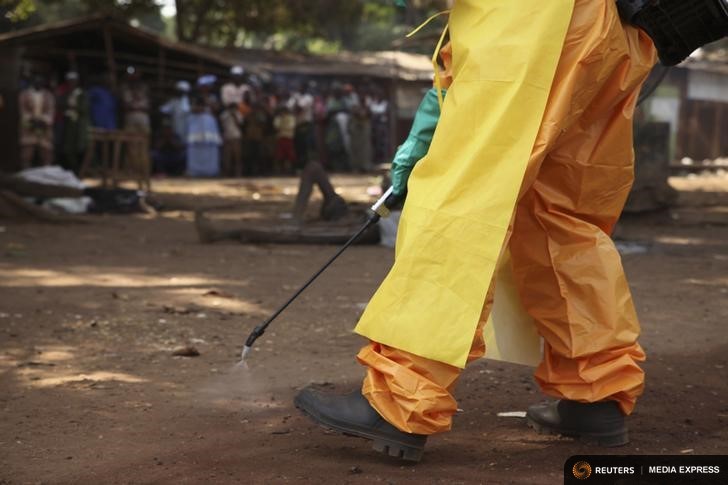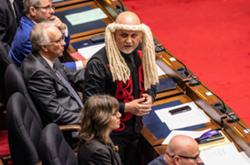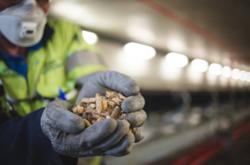- Deadliest Enemy: Our War Against Killer Germs
- Little, Brown (2017)
The people who work in global health tend to think of it as a war, and I understand why. On a visit to the European Centre for Disease Control and Prevention in Stockholm, I talked to doctors who referred to “the pandemic” of swine flu in 2009 just as veterans refer to “the war” — whatever war they’d fought in.
So I can understand why Dr. Michael Osterholm believes that we’re all in a war, against a literally existential threat: viruses and bacteria that do not negotiate. With his co-author Mark Olshaker, he gives us a briefing on the chief theatres of conflict across the whole planet.
Osterholm has earned his nickname “Bad News Mike.” In 1980 he was among the researchers studying fatal toxic shock syndrome in young women — which was found to be triggered by a particular kind of tampon that actually fed the growth of Staphyloccocus aureus bacteria in the vagina. Before that was fully understood, politics and corporate money complicated the research.
He was also involved in trying to understand HIV/AIDS in the 1980s, even before it had a name. Ever since, he’s been engaged in the fight against infectious diseases and other health threats. As the director of CIDRAP, the Center for Infectious Disease Research and Policy at the University of Minnesota, Osterholm is a key authority on global health. If he says it’s bad news, it’s really bad news.
How we take that news depends, he explains, on our “threat matrix.” Epidemiologists define such a matrix by a disease’s impact risk and emergence risk, or by the possible severity of an outbreak and our preparedness for it. H5N1 avian flu, for example, has a horrible impact on those it infects, killing over half of them. But since 2003, it’s infected just 858 persons out of seven billion. Still, another influenza pandemic like that of 1918-19 would be extremely severe, is certain to happen, and we are critically unprepared for it.
Judging threats irrationally
Most people don’t think like that, Osterholm observes; our usual threat matrix is emotional, not statistical. Regardless of statistics, we’re scared of flying, but not of driving. And when Ebola broke out in West Africa a couple of years ago, Americans didn’t pay much attention. Then one Liberian turned up in a Texas hospital with Ebola and infected a couple of his nurses. The whole U.S. came down with “Ebolanoia.”
Osterholm’s threat matrix offers grounds for real alarm. He looks at the conditions aggravating our present situation. Expanding populations crowd into wilderness, releasing new bacteria and viruses like Zika. The idiotic abuse of antibiotics to create more and cheaper meat is leading to microbial resistance that will undo a century of infection control. (Osterholm calls it “a slow-motion worldwide pandemic” that will cost us 300 million lives and $100 trillion by the 2050s.)
Tinkering with some viruses could make them deadlier, accidentally or on purpose. Cheap transportation can move a virus like SARS from Hong Kong to Toronto in hours, and climate change opens up new territory for diseases like Zika.
A nine-point plan of attack
This survey of real and potential threats is not just to scare us — although Osterholm’s scenario for a new version of the Spanish flu is disturbingly plausible. Having established who our deadliest enemies are, Osterholm offers a nine-point plan of attack.
First is a program on the scale of the Manhattan Project to develop a universal flu vaccine. As flu viruses change, our vaccines have to change every year as well, and even then they’re often ineffective. An attack on the unchanging part of the viruses is quite possible and would end the threat of both seasonal and pandemic influenza.
Next is an international organization to fight all aspect of microbial resistance, from antibiotic resistance to developing new drugs. Third is increased support for vaccine development, which (like antibiotics) has stagnated because it’s expensive and often unprofitable.
Fourth, a program to fight diseases borne by the Aedes mosquito would help control dengue, chikungunya, Zika, and yellow fever. A similar program, funded by the Gates Foundation, is doing the same thing for malaria, which is carried by another mosquito species.
Fifth, strengthen defences against bioterrorism, which Osterholm persuasively shows is a genuine threat. A related step would be an international board to oversee research that could lead to “gain of function” — making a virus deadlier, whether accidentally or intentionally.
Seventh, treat tuberculosis, HIV/AIDS, malaria, and “neglected” diseases as the major threats they are. Eighth, anticipate the effects of climate change. This means not just research but active surveillance for known and emerging diseases turning up wherever changing conditions permit them.
Finally, says Osterholm, “adopt a One Health approach to human and animal diseases throughout the world.” That means recognizing that animal health is critical to our own, especially the health of food animals, wild birds, and pets.
Who will fight the war?
Given what he’s told us, and the costs of inaction, Osterholm’s war plan makes excellent sense. Its chief weakness is political. He argues that “the United States will have to bear both the primary leadership responsibilities and the bulk of the financial burden.” Under the new Trump administration, however, this seems like a burden the Americans will refuse to assume.
U.S. public health is one of Trump’s targets, with $15.1 billion in cuts envisaged for the Department of Health and Human Services. He also plans to cut the budget of the Environmental Protection Agency by 31 per cent, and he shows no interest in appointing a national science adviser.
Given his wilful ignorance of science and health issues, his apathy toward the problems of poverty overseas, and his evident inability to see more than a day or two ahead, Trump is no commander-in-chief to oversee Mike Osterholm’s war against our deadliest enemies. If anyone is going to fight that war, it’s going to be the rest of the industrial nations, which don’t seem to in the mood to deal with anyone’s problems but their own.
Bacteria and viruses aren’t really our deadliest enemies. We ourselves are. ![]()
Read more: Health

















Tyee Commenting Guidelines
Comments that violate guidelines risk being deleted, and violations may result in a temporary or permanent user ban. Maintain the spirit of good conversation to stay in the discussion.
*Please note The Tyee is not a forum for spreading misinformation about COVID-19, denying its existence or minimizing its risk to public health.
Do:
Do not: